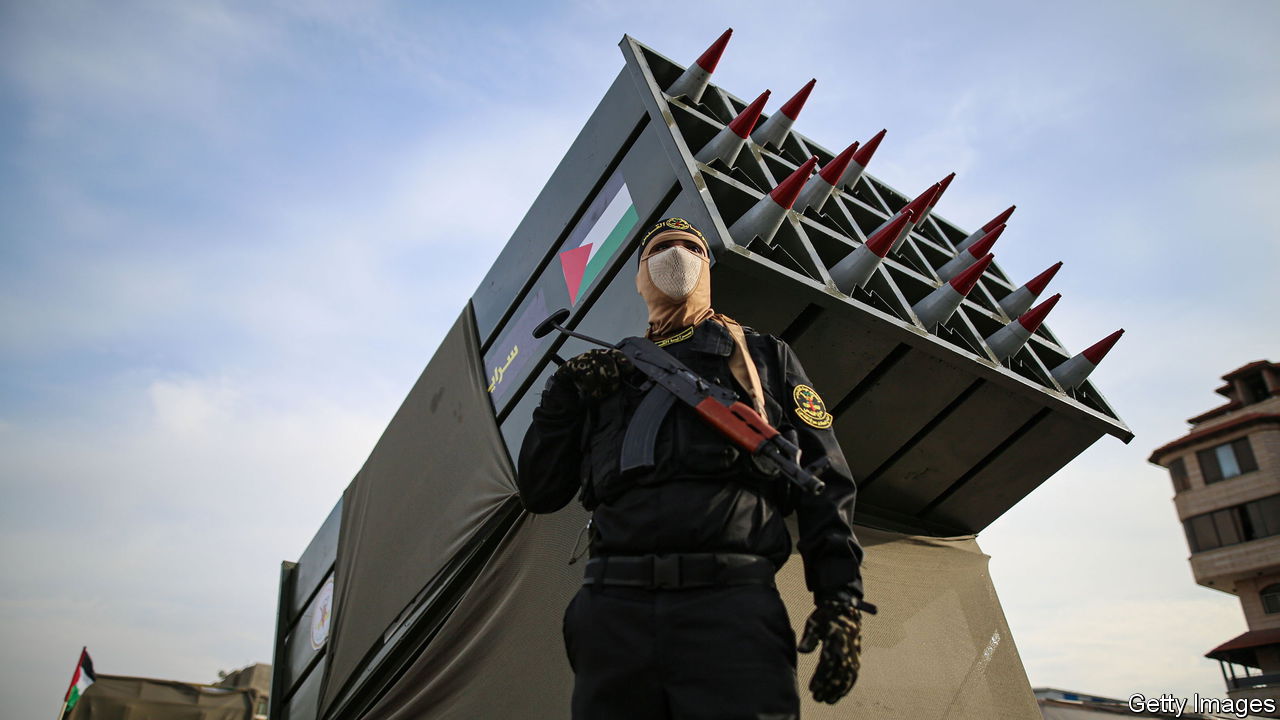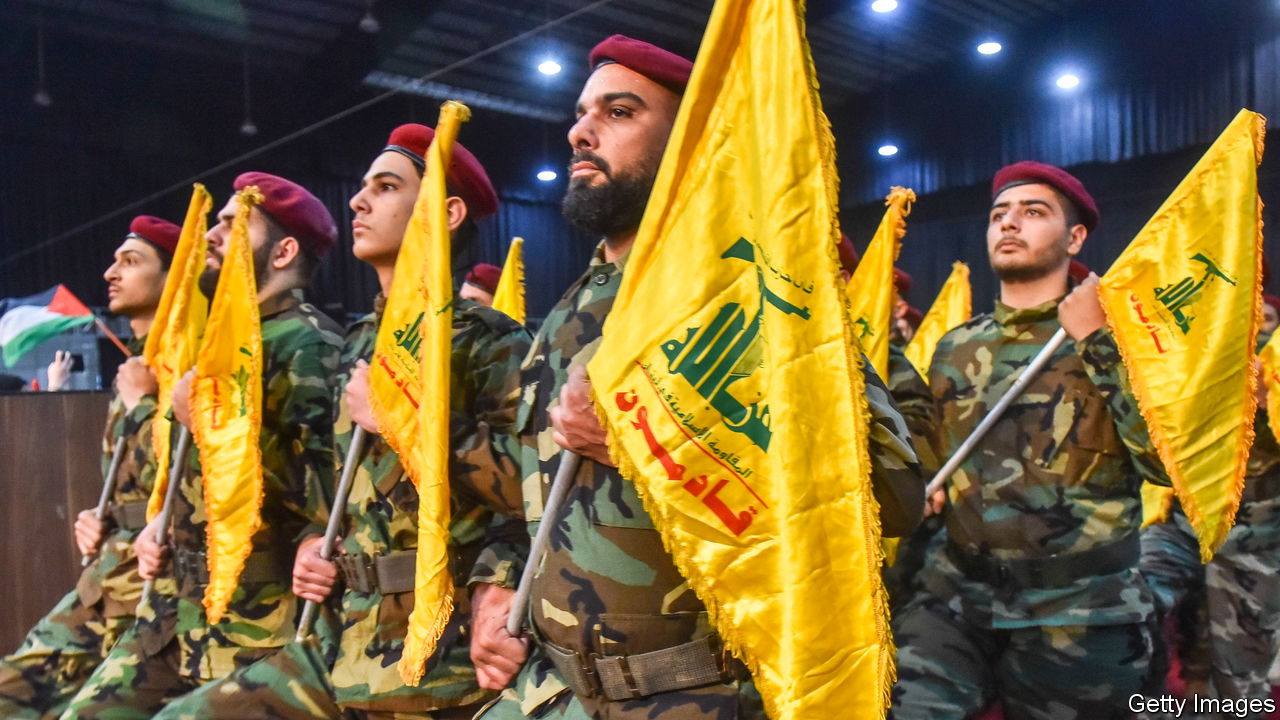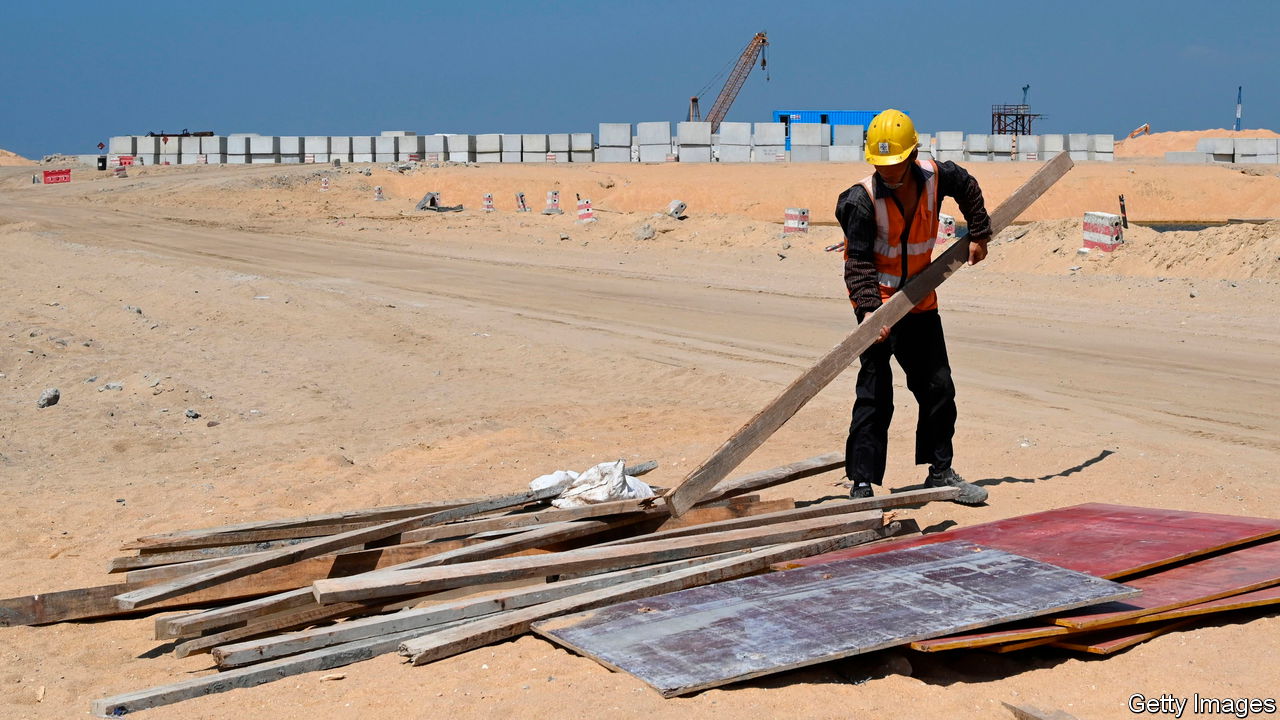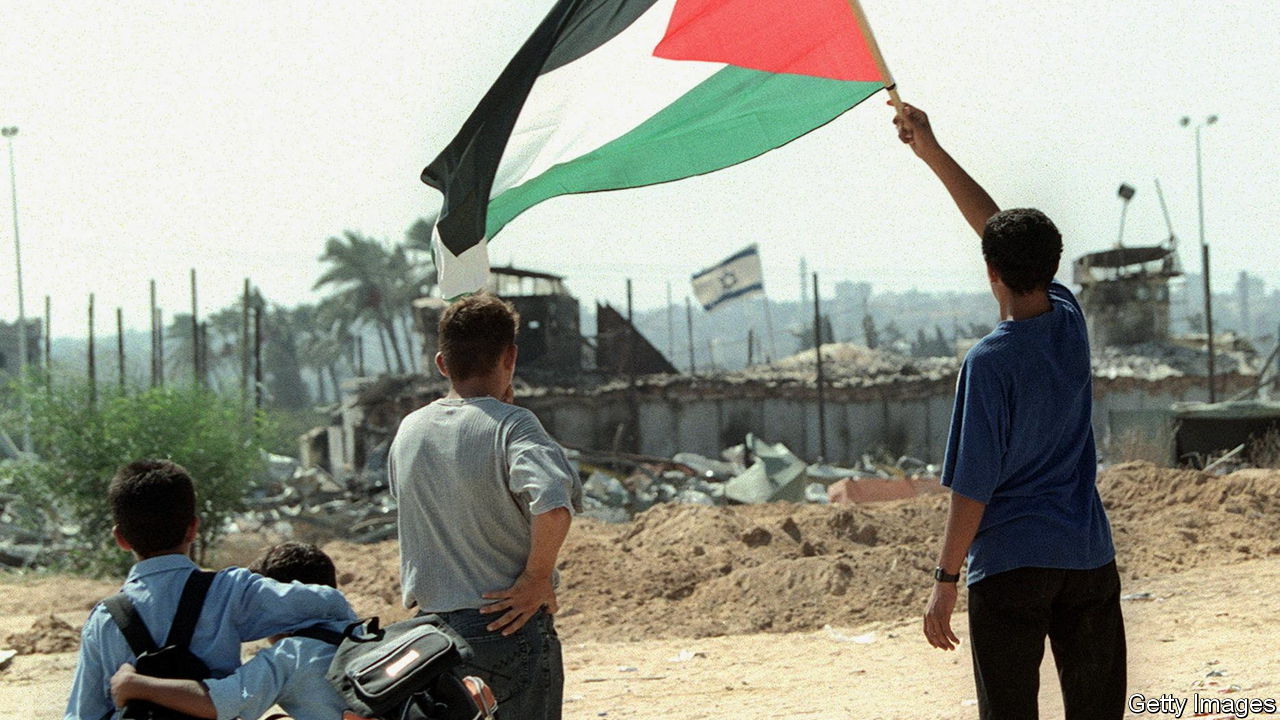What evidence reveals about the Gaza hospital blast’s source
The damage points to a malfunctioning rocket, not an air strike
At around 7pm on October 17th, a blast struck the Ahli Arab hospital in Gaza city. The hospital is run by the Anglican church, and a church official told the BBC that around 600 staff and patients were in the complex, and 1,000 civilians were sheltering in the grounds. Within hours the Gazan health ministry, which is overseen by Hamas, said that almost 500 civilians had died (though various Western intelligence officials have put the number as much as 50-90% lower.)
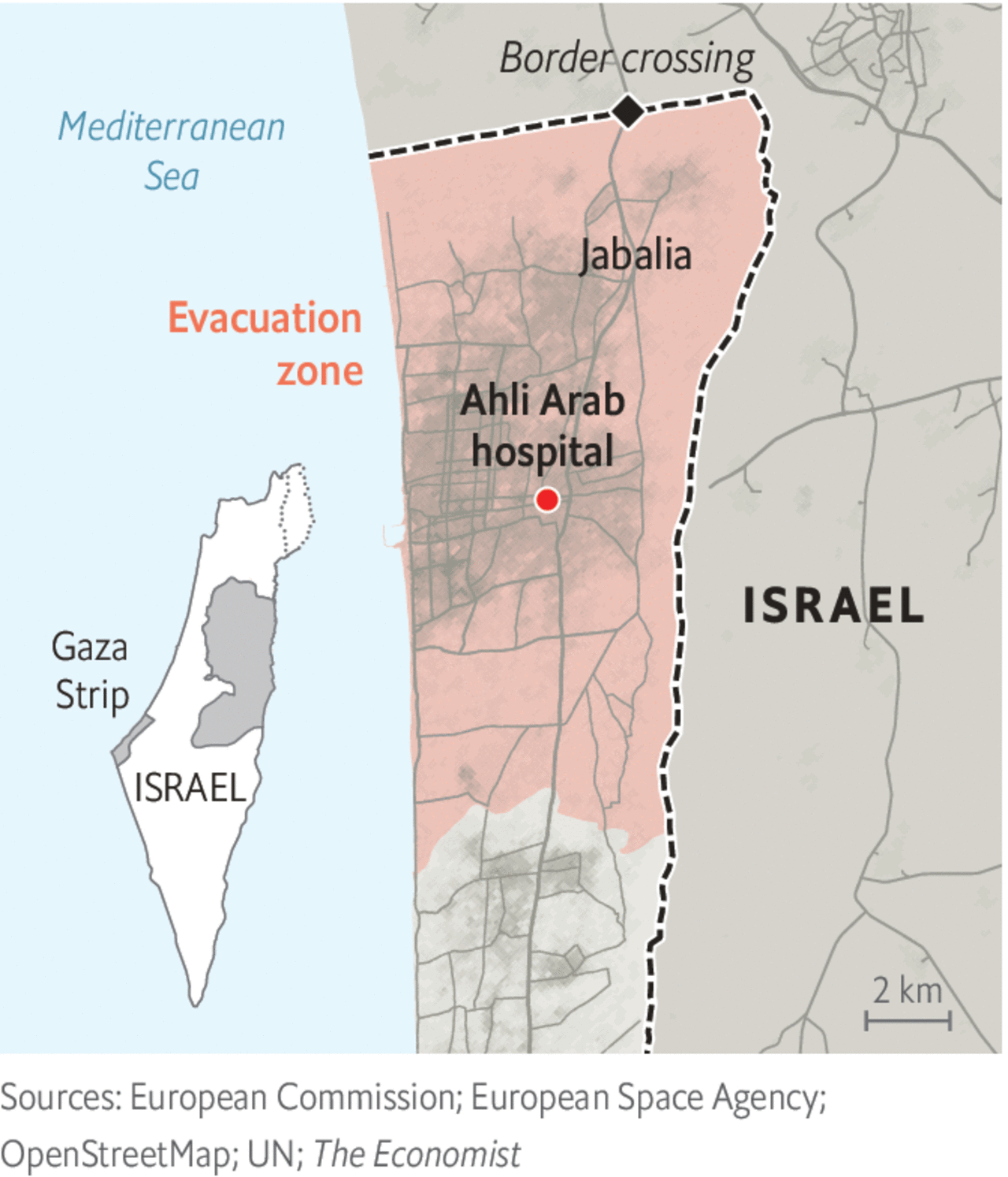
Image: The Economist
Hamas and several Arab countries swiftly blamed Israel for the attack. Israel claimed that the explosion had been caused by a failed rocket launch by Palestinian Islamic Jihad (PIJ), a militant group operating in Gaza. PIJ denied involvement. But the balance of evidence suggests that an errant rocket was more likely to have been responsible.
On October 18th President Joe Biden arrived in Tel Aviv and cautiously backed Israel’s version of events, telling Binyamin Netanyahu, the country’s prime minister, that the catastrophe appeared to have been caused by “the other team”. America’s National Security Council said that it came to that conclusion based on “available reporting, including intelligence, missile activity and open-source video and images of the incident”. On October 19th, in a televised address, Mr Biden said unequivocally that the explosion at the hospital “was not done by the Israelis”. What information is available—and what does it reveal about the blast?
Timeline of a tragedy
Local Gaza/Israel time (GMT+3)
Hamas fires rockets, triggering sirens in southern Israel
Video footage shows a rocket explode in the sky above Gaza city
Palestinian Islamic Jihad (PIJ) fires a series of rockets from a cemetery near the Ahli Arab hospital, according to the Israeli Defence Forces (IDF)
Video footage shows a blast in the car park of the hospital
The Al-Quds Brigade, the military arm of the PIJ, says that it has fired rockets at Israel
Turkey condemns the “latest example” of Israel’s “attacks devoid of the most basic human values”
Jordan condemns Israel for perpetrating “heinous war crimes”
Egypt condemns Israel’s “clear violation of international law”
The IDF issues an official denial of involvement in the blast at the hospital
Saudi Arabia condemns Israel’s “flagrant violation of all international laws and norms”
President Joe Biden meets Israel’s prime minister, Binyamin Netanyahu, in Tel Aviv and claims "the other team" was responsible for the blast
A spokesperson for America's National Security Council says Israel was not responsible for the blast
Source:
News reports
The explosion happened in the hospital car park. The number of casualties remains unconfirmed, but Israel accused Hamas of inflating the count and the initial death toll appears to have been exaggerated. An American intelligence assessment obtained by CNN on October 19th estimated it to be between 100 and 300. Images from the scene show scores of bodies, but the exact number is impossible to verify. The blast appeared to create only a small crater, with much of the damage apparently caused by fire.
Many experts believe that the nature of the explosion does not suggest an Israeli strike, given that those typically cause greater structural damage around the point of impact. Justin Bronk of the Royal United Services Institute, a think-tank in London, has said that the damage appears more consistent with that caused by a failed rocket than the types of munitions used by Israeli forces. Other experts say that much of the damage may have been caused by rocket propellant rather than an explosive warhead. Israeli drone footage of the hospital after the incident shows that most buildings remain intact—although a doctor in the hospital said that the ceiling of the operating room where he was working caved in. The images of burned out cars could suggest a fallen rocket and a fire made worse by its fuel.
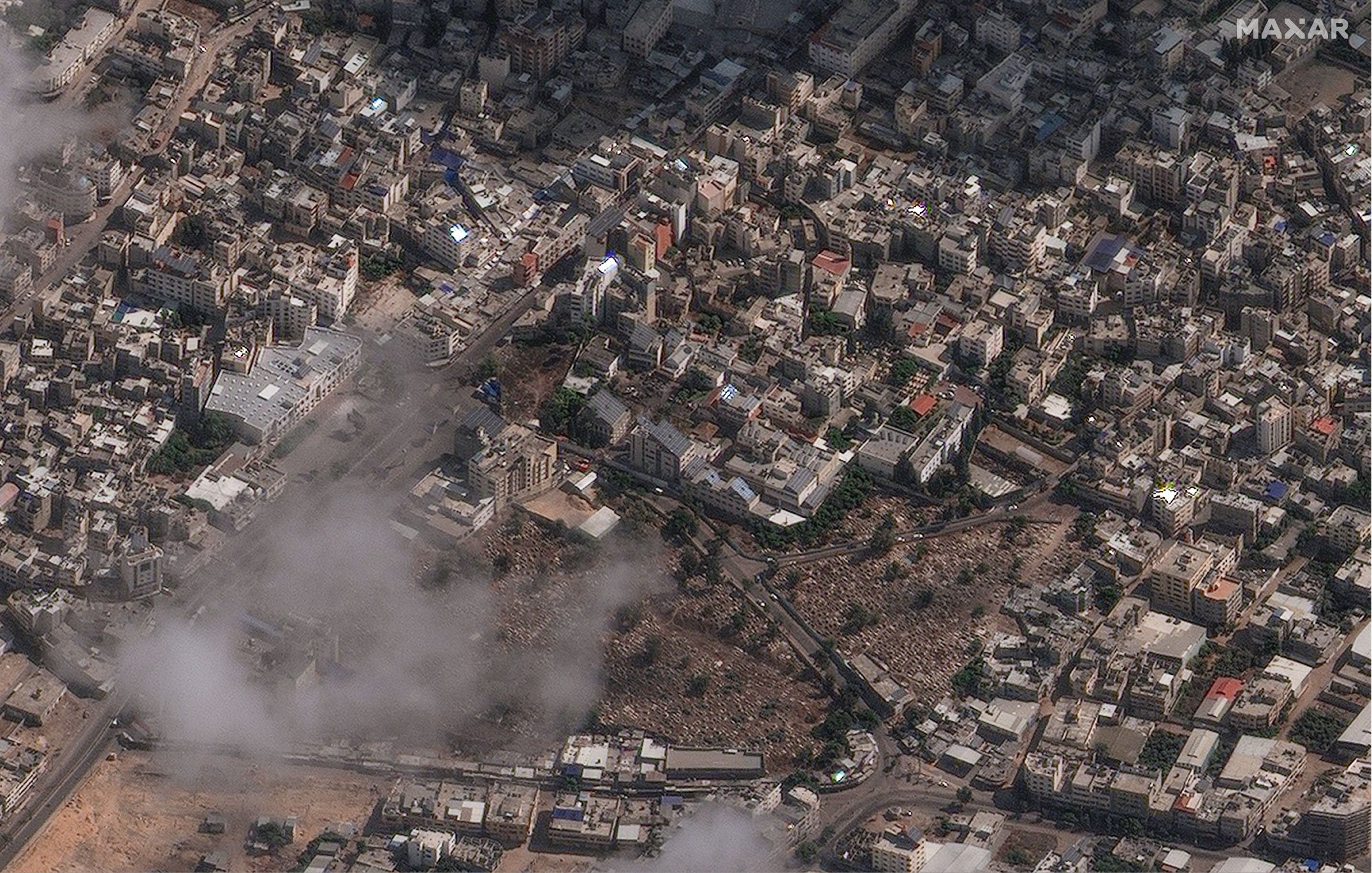
Ahli Arab hospital courtyard
Cemetery
Image: Maxar
Israel says it was not carrying out strikes near the hospital at the time of the blast. The Israel Defence Forces (IDF) said that its military radar systems, which track rocket fire from Gaza, showed that rockets were fired from close to the hospital at 18:59 on October 17th. These claims have not been independently verified. American officials have told news outlets that they collected signals intelligence and data from infra-red sensors aboard satellites and reached the same conclusion as Israel.
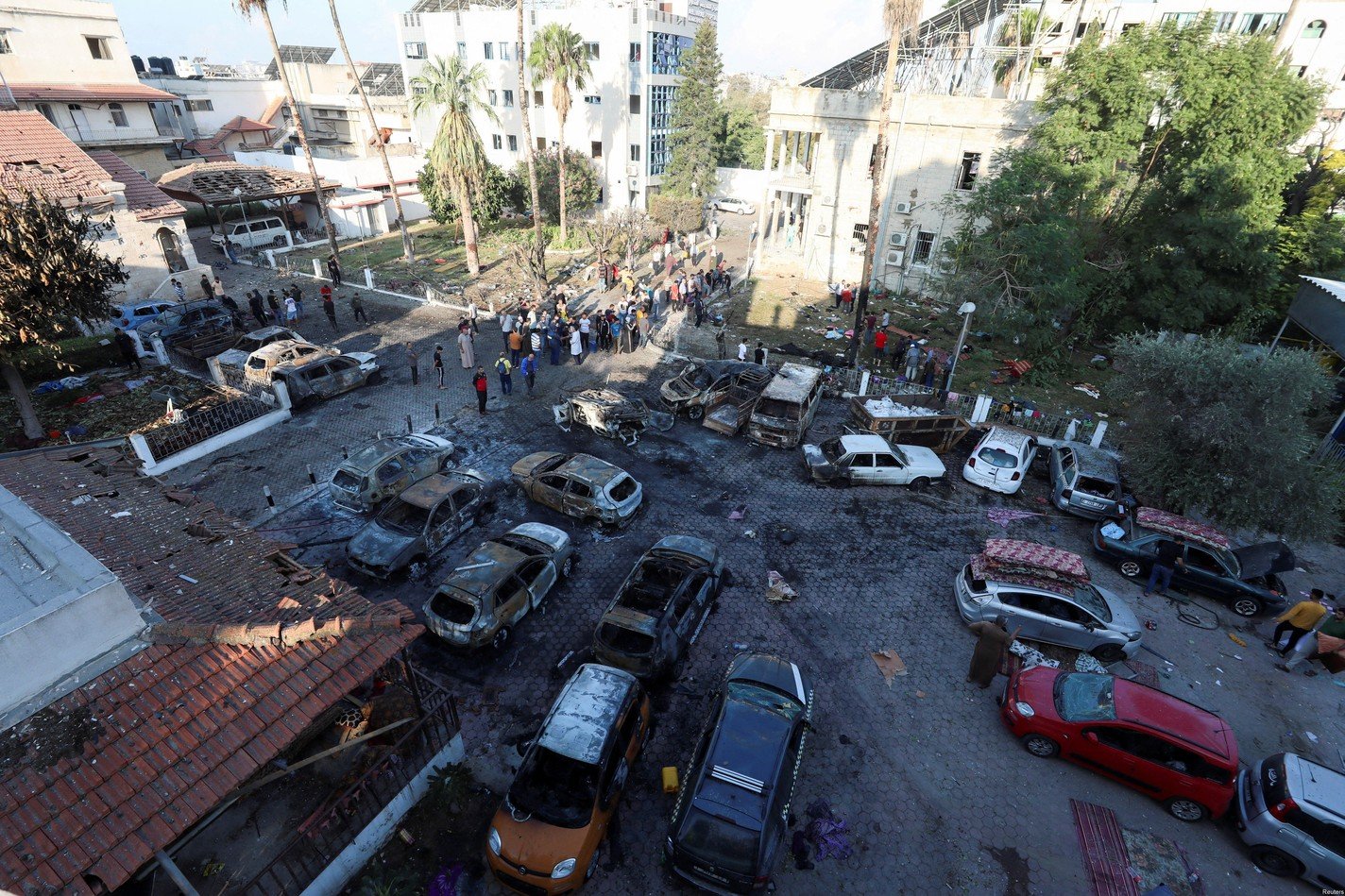
Image: Mohammed Al Masri/Reuters
The IDF also released an audio recording of an intercepted phone call which it claims is between two Hamas operatives, discussing the possibility that a rocket fired by PIJ was responsible. The identity of these men has not been verified and some observers have noted that they speak Arabic without a Gazan accent. They appear to be relaying second-hand information: one man is surprised to hear PIJ blamed for the blast, and the other responds that “they are saying” PIJ is responsible. It is not clear who “they” refers to.
The fallout from the blast has been immense. Within hours protests had broken out across the Arab world, including in Iraq, Lebanon, Libya and Tunisia. Jordan swiftly cancelled a summit it was due to host in Amman, its capital, with President Biden and Palestinian and Egyptian leaders. Turkey declared three days of national mourning. And arguments over the blast have set back efforts to agree on a deal to get aid into the strip. That will bring yet more suffering for civilians in Gaza. ■
